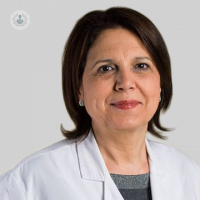70% of ADHD cases are inherited
Written by:The deficit of child and adolescent care, more commonly known as ADHD, is a childhood neurodevelopmental disorder at an early age. It is mainly characterized by inattention, but can also be accompanied by hyperactivity and impulsivity. Specialists in Pediatrics say that this disorder affects 5% of school - age children. It not only affects the sufferer, but also the family and the environment.
The presence or absence of these three symptoms and the degree in which they are present establishes three clinical subtypes:
- ADHD inattentive subtype predominates attention deficit
- ADHD hyperactive and impulsive subtype: predominantly hyperactivity and impulsivity
- ADHD combined subtype: three symptoms appear alike
These symptoms must be present before age 7 and for a period exceeding 6 months. These symptoms must occur in various situations and quotidian places (at home, at school, etc.) and interfere with social and academic activities of the child.
ADHD may lead to other diseases; in fact, more than 70% of affected patients suffering from other disorders. Attention deficit interferes with the acquisition of knowledge and, therefore, in academic performance. Hyperactivity and impulsivity jeopardize the proper compliance with the rules of coexistence.

What are the causes of ADHD?
Over 70% of cases, ADHD is inherited. Its cause is also related to environmental factors, such as environmental presence of heavy metals such as mercury or iron deficiency in children.
Snuff consumption during pregnancy increases by 2.5 times the risk for this disease. It is also associated with diseases that cause brain damage during pregnancy, such as prematurity or hypoxic-ischemic encephalopathy.
Treatment of ADHD
Treatment for ADHD may be pharmacological or not, as both have proved effective, especially when used together.
Nonpharmacological part consists of a psychoeducational treatment to be performed with parents, with children and also at school. It is to explain what the disorder, why it occurs and how they can improve. On the other hand, drug treatment is performed with psychostimulants.
Edited by Noelia García Pino


